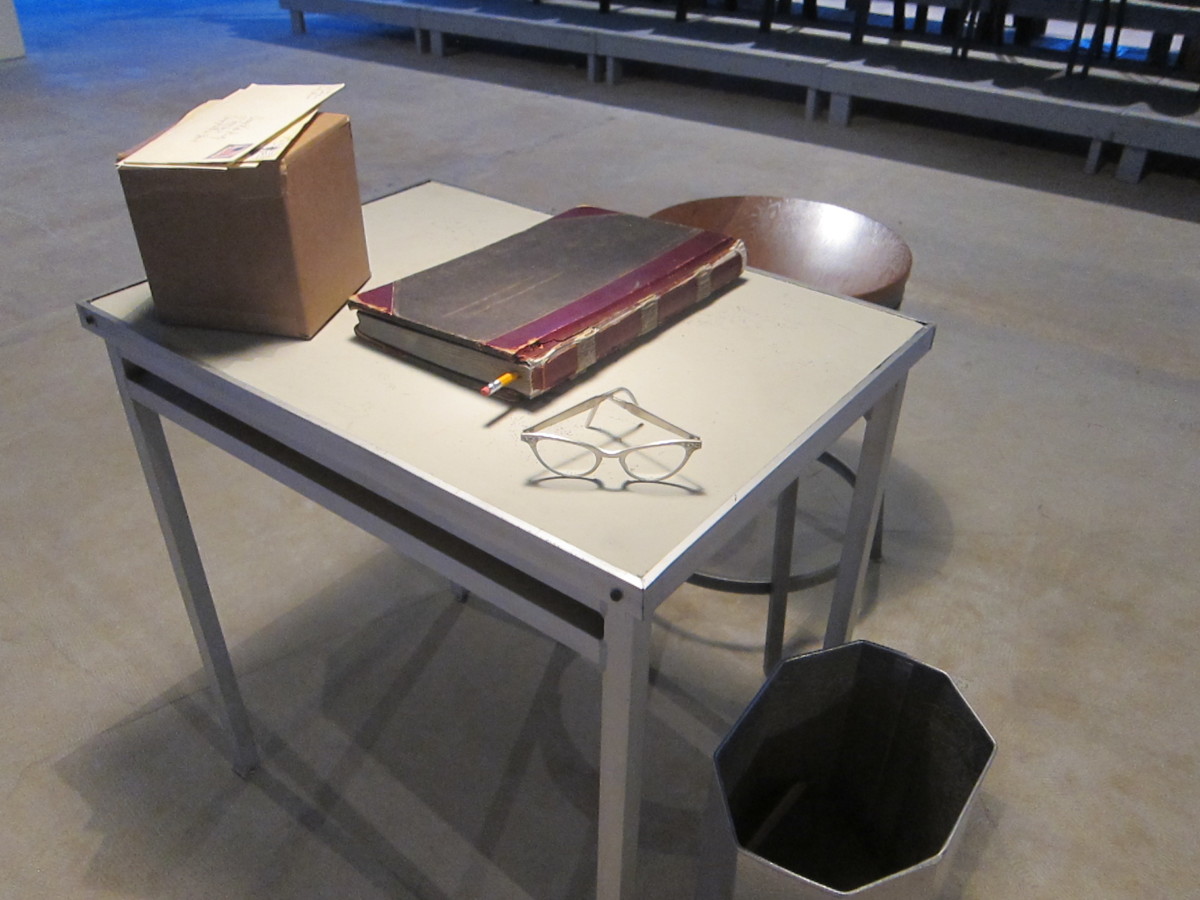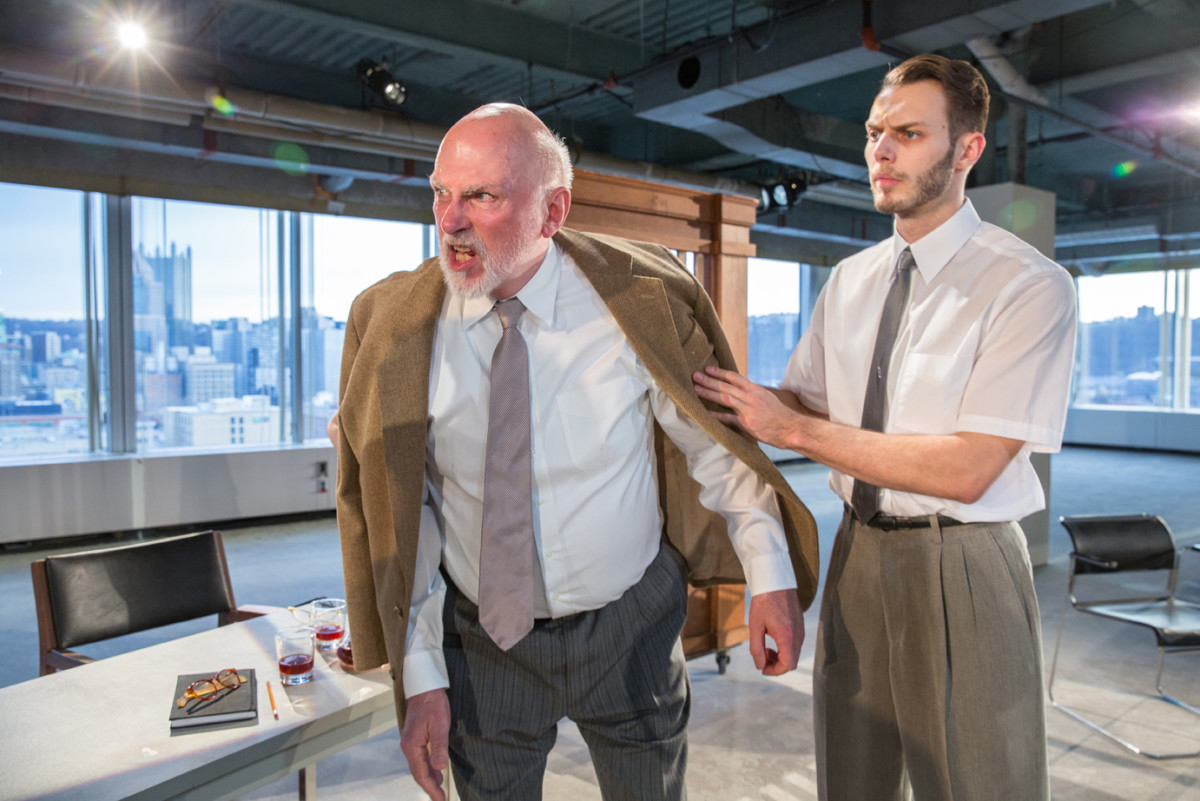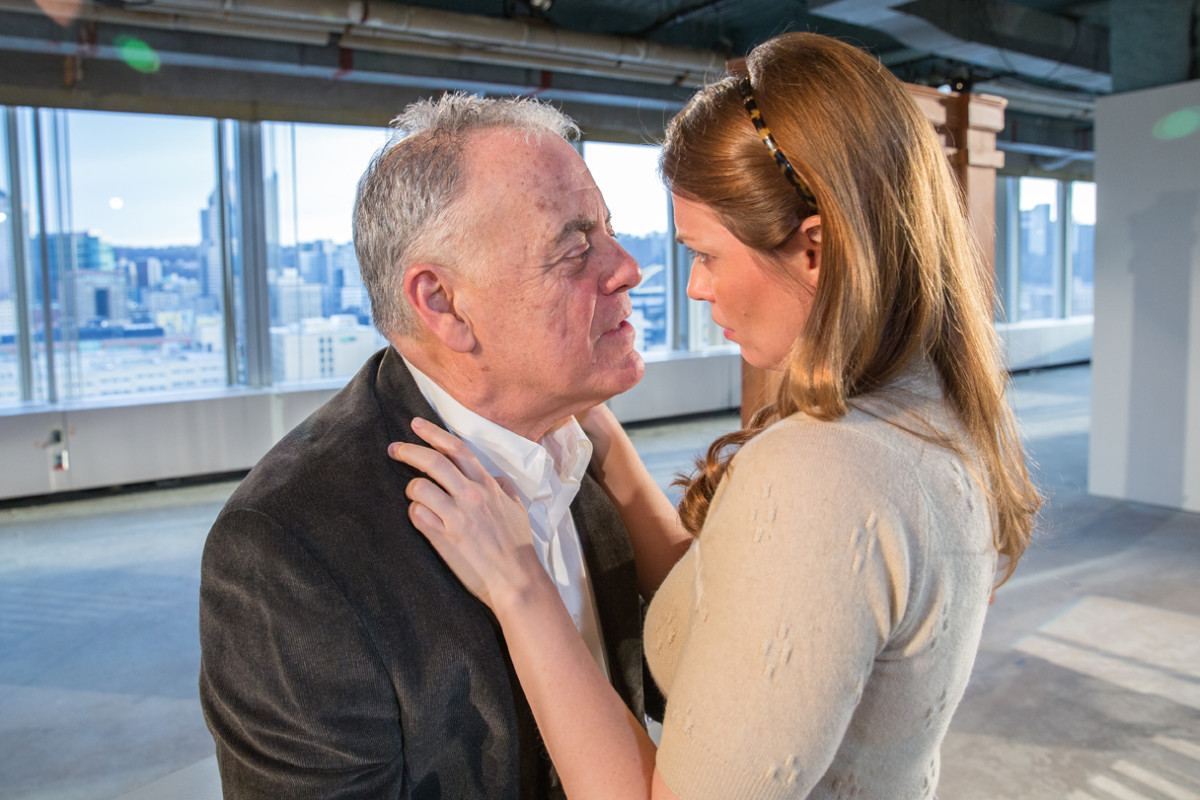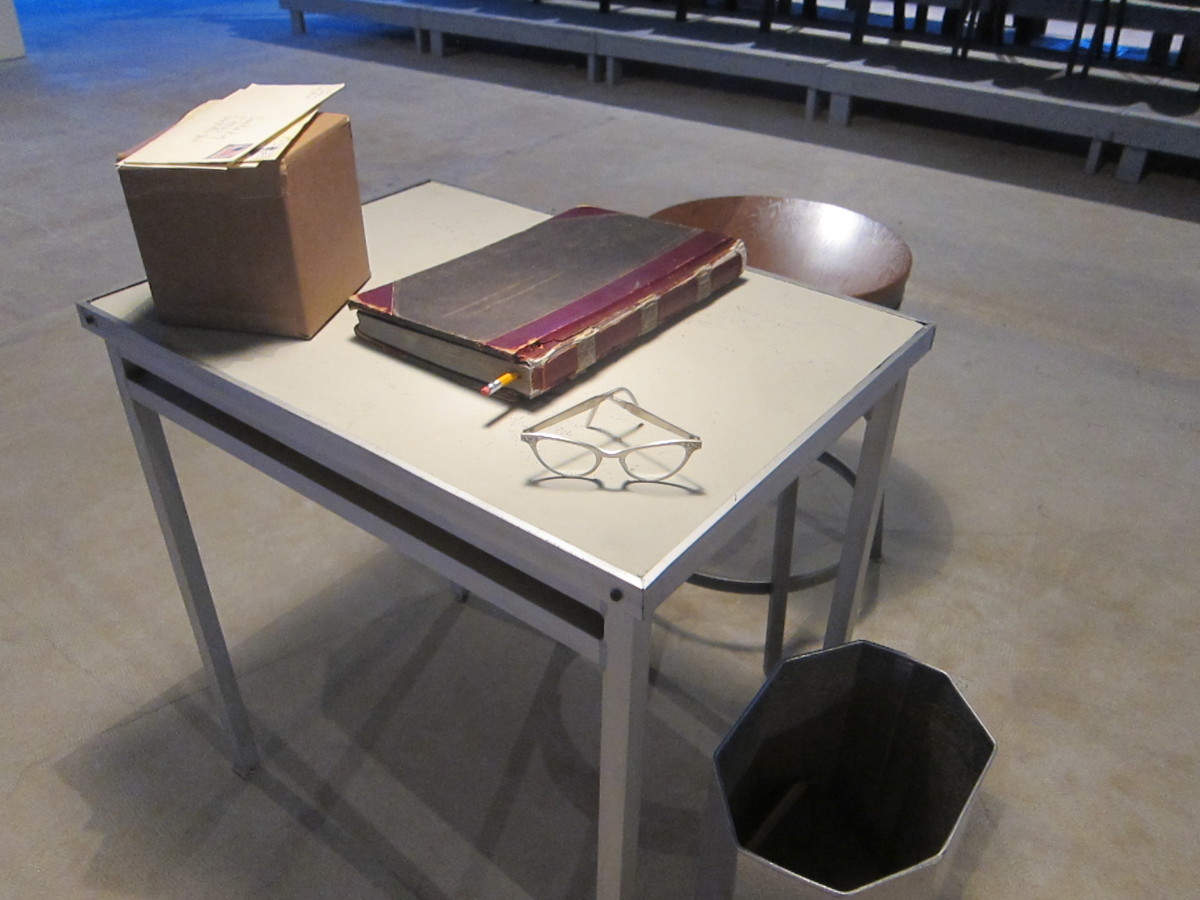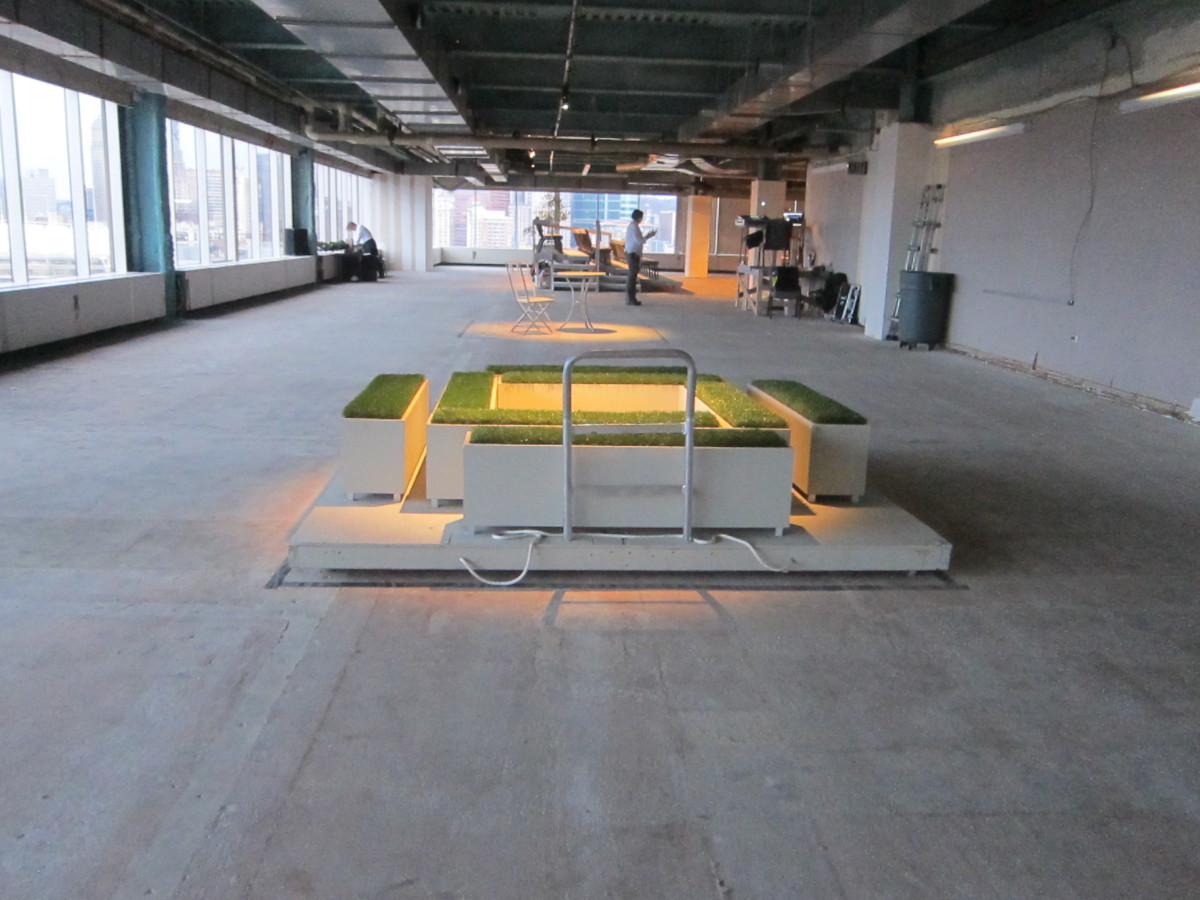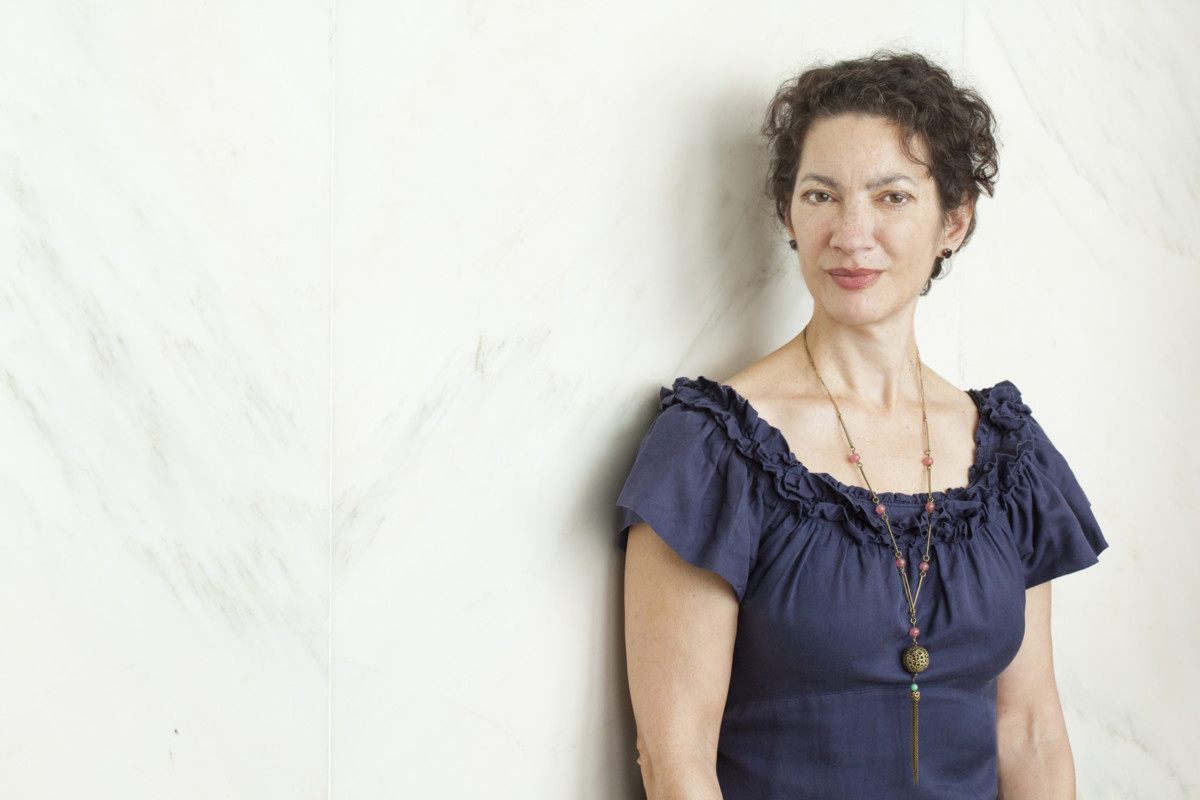Karla Boos. Photograph courtesy of Heather Mull
By Roslyn Bernstein
Quantum Theatre’s artistic director Karla Boos arrives at Zeke’s Coffee House on Penn Avenue in Pittsburgh, helmet in hand. It’s just a short bike ride from her office and, despite the rain and the cold which has interrupted signs of spring, and the fact that there is only one more rehearsal before the opening of her company’s production of Henrik Ibsen’s The Master Builder, she seems strangely relaxed.
It’s the Quantum’s Silver Anniversary, twenty-five years of nomadic wandering up and down the hills of the city from quirky venue to quirky venue, some without heat, and some without bathrooms (enter PORTA POTTIES). Seventy-five productions, staged at such diverse locations as The Brew House, The Mattress Factory, an avant-garde art space, the Andy Warhol Museum, the Giant Eagle Warehouse, Allegheny Cemetery, the Pittsburgh Zoo, Mellon Park, the ballroom of the new Ace Hotel, formerly a YMCA, and, on April 8th, the ninth floor of 2 Allegheny Center, a modernist building renamed Nova Place which will soon be reborn as a high-technology hub.
For Boos, the huge, rectangular floor at Nova was rather luxurious. The space had been gutted, but there was heat, electricity, and working plumbing. She barely had to raid her giant warehouse, stocked with three different heating systems, chairs, and a detritus of things that people had built for Quantum’s productions over the years.
“You could see an expansive view out of every window, on all four sides,” Boos said of the Nova space. Strangely, though, “with its lowish ceiling, there was also a sense of oppression and, at times, when they were rehearsing, the wind would whistle through. You felt like you were in Norway in a great tower.”
Both Boos and the play’s director, Martin Giles, a Pittsburgh-based director, actor, and playwright, share “an abiding obsession with Ibsen.” To Giles, who directed Quantum’s production of Ibsen’s John Gabriel Borkman (2013) and acted in The Wild Duck (2003), “Ibsen takes a really good, hard look at things. He does not flinch.”
The narrative revolves around Halvard Solness (John Shepard), a “master builder” who is not an architect but has learned his trade on the job. Solness and his wife Aline (Catherine Moore) have suffered great tragedy, the loss of her family home through a fire and the death of their twin sons. Solness fears the arrival of the next generation and is unwilling to recognize his draftsman Radnar Brovik’s (Thomas Constantine Moore) talent. Youth also arrives in the person of Hilda Wangel (Hayley Nielsen), who tells Halvard that ten years earlier, after he christened a steeple by putting a wreath at the top, a triumphant moment when he temporarily conquered his fear of heights, he kissed her and promised to build her, in the future, a castle in the air.
Much in the play, according to Giles, is strongly autobiographical, including Ibsen’s strange, passionate (though not sexual) relations with younger women, and his deep regrets about a life devoted to his work and not his family.
Boos seized on the suggestion, setting the play, written in 1892, eight years before Ibsen died, in the 1950s.
Inspired by the Heinz Architectural Center’s yearlong focus on Modernism in Pittsburgh, featuring a fine exhibit, HACLab Pittsburgh: Imagining the Modern, at the Carnegie Museum of Art (CMOA) and by the work of Carnegie Mellon architectural students whose spring course involved creating design proposals for the Allegheny Center, Boos spoke to her long-time friend Raymund Ryan, curator of The Heinz Architectural Center. Ryan thought that it would be great to get Quantum involved with the Modernism exhibit. He remembers blurting that it would “be interesting to set The Master Builder in the mid-20th century.” Only later, after reading the text, did Ryan realize that the play was so very modern.
Ever the innovator, Boos seized on the suggestion, setting the play, written in 1892, eight years before Ibsen died, in the 1950s. To accomplish the time change, Boos and director Giles consulted with Ryan and the museum staff to gain a deeper understanding of modernist architecture in which form follows function. As a result, Giles and set designer Tony Ferrieri chose things that were significant: “Let’s have a bare desk with certain objects that say something. An old red leather ledger on the bookkeeper Kaja Fosli’s (Kelly Trumbull) desk, a pencil, wire glasses, and some mail.” Adjacent to it, a stool slightly too high for the desk.
There is another stool that Halvard keeps moving around the stage, in a sort of weird, absurdist gesture that borders on the comic. “It’s all about Halvard’s control,” said Shepard, who is currently performing in his ninth Quantum production. Shepard spent nearly five months getting the lines into his “long-term” memory. “In my mind,” he said, “Solness also has an obsession about order.”
Shepard has lots of thoughts on Solness: “He tries to think outside the box, as it were, as an artist, a ‘builder.’ He is trying not to conform to expected behavior, trying to operate outside the constraints of social convention. Unfortunately, he does get all twisted up in those conventions and expectations.” Ultimately, Shepard sees him as a man who is trying to square everything up before he dies.
Ryan adds another dimension to Solness’s character. He sees Solness as “exhibiting many of the traits we associate with modernist architects such as Wright, Mies, Neutra, or Saarinen. Warts and all. Charm mixed, in cases, with insecurity.”
Occasionally, Giles uses Ibsen’s stage directions to move the action in a new direction.
There is no stage. Instead, the 150 seats are arranged at one end of the building to face south, towards the city, in u-shaped tiers. The set is minimalist: a pair of slotted wood panels create an inner office and the desks and stools fill the outer space. Little installations of furniture—which people can explore during the intermissions—are placed throughout the rectangle and then restaged at each intermission.
Occasionally, Giles uses Ibsen’s stage directions to move the action in a new direction. In an exchange between Kaja and Solness, “Oh, you are so good to me,” (stage directions: she goes down to her knees) Giles transformed the moment into a sexually charged scene. “I took it from there,” he said. Giles chose music from Shostakovich’s string quartets to accompany the production because of its contemporary sound.
More often than not, Giles followed Ibsen carefully, as he did in the ending of the play. Aline Solness’s black dress is now covered with a white shawl, one that Hilda Wangel grabs and waves wildly after Solness falls to his death from the tower. “Castles in the air! Castles in the air,” cries Miss Wangel.
Martin Giles’s direction is compelling, and the modernist setting does much to echo the irony embedded in Ibsen’s drama—fear of the new, fear of change. But the power of the production clearly reflects the creative genius of Karla Boos, whose quarter-century as Quantum’s artistic director has taught her how to make unconventional theatre work.
With a yearly budget of $1 million, Boos draws a quarter of her support from individuals, a third from ticket sales, and the remainder from foundations. Over the run of each show, Quantum attracts about 2,500 people, seating 100 to 250 at each performance. From the very beginning, she understood the company’s mission, establishing Quantum as a non-profit with a board in place. Susan Harris Smith, who served on the company’s first board of directors and is currently serving again, calls Boos, “a force.” Her secret, according to Smith, is that “Boos engages the audience and makes significant contacts with neighborhoods.” Quantum subscriber D. J. Oshry has been following Boos for the full twenty-five years. “It’s been a real journey because she has grown herself,” Oshry said. “I must say that she sometimes loves to do things that I’d rather not see, but she has a very clear notion of her artistic vision. Nothing interferes with that.”
Boos does not pay rent, but instead “makes a pact that is a win-win situation with the owner of the space.”
Boos has a strategy for her traveling troupe. First, she decides on a play or an opera, then searches for an appropriate space, often with only six weeks to find it. For her the search involves “taking people out of the theater and putting them together inside a work of art.” She discovered an enthusiastic audience in Pittsburgh. “I’ve put them in uncomfortable situations over the years. People have watched shows wrapped in blankets.”
Boos does not pay rent, but instead “makes a pact that is a win-win situation with the owner of the space.” To prove her point, she holds up the “Weekend Magazine” section of the Pittsburgh Post-Gazette, its cover devoted to The Master Builder.
Beyond the condition of the space, important issues included on her to-do list are liability insurance, security, and all needed permits. “We like to build things that honor the proportions of the space,” Boos said, acknowledging that the company spends two weeks doing major construction before they arrive for their five or six weeks of rehearsal and month of performances.
Now, for the first time in her working life, Boos is about to take a sabbatical, spending May through July imbibing theater in London. The trip is the direct result of her winning a 2015 Established Artist of the Year award, named for Carol Brown, President and CEO of the Pittsburgh Cultural Trust from 1986-2000. At the awards ceremony, Boos repeated her favorite quote about the Quantum Theatre: “It makes work with the poetry of William Blake and the determination of General Patton.”
Others will have to plan the first production of the fall season, Peribanez by Lope de Vega, outdoors in Mellon Park, but she’ll be back in Pittsburgh at the end of July, in time to plan the remaining three productions of the year, The River by Jez Butterworth, a third production that is not yet set, and Collaborators by John Hodge.
“When I return,” Boos said with a sigh, “I have one month to find the next site.”
Quantum Theatre: Henrik Ibsen’s The Master Builder is playing through May 1 at Nova Place (Former Allegheny Center), Pittsburgh, PA.
Hear more in this WQED Podcast. There will be a pre-show tour of the Nova Place space on April 27th, and a panel conversation on architecture on April 29th.
